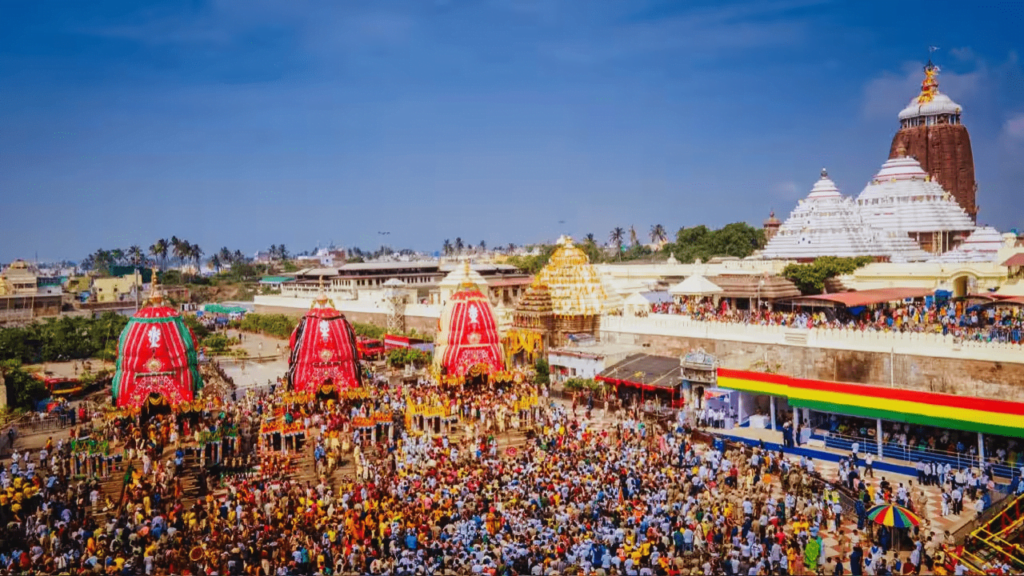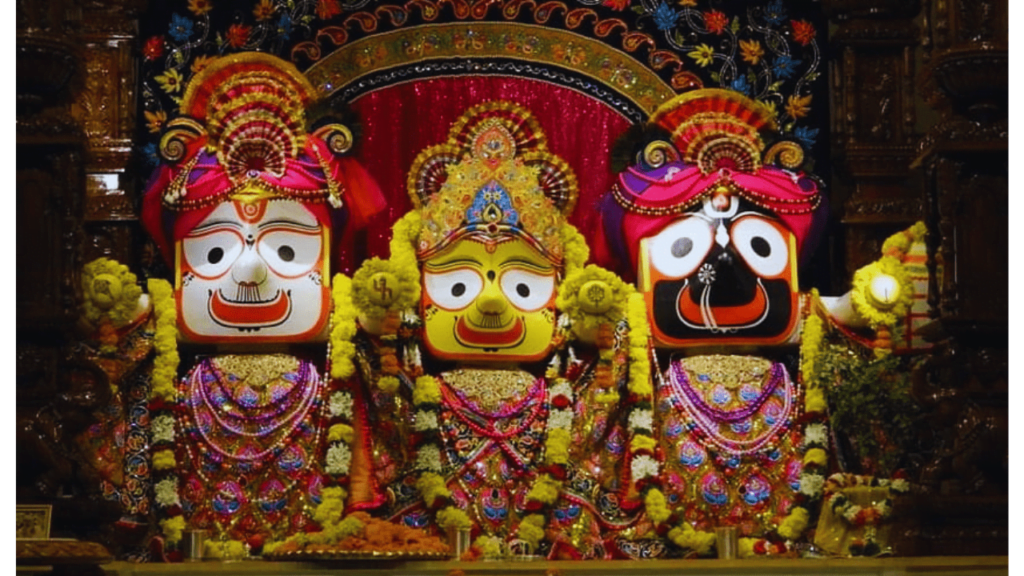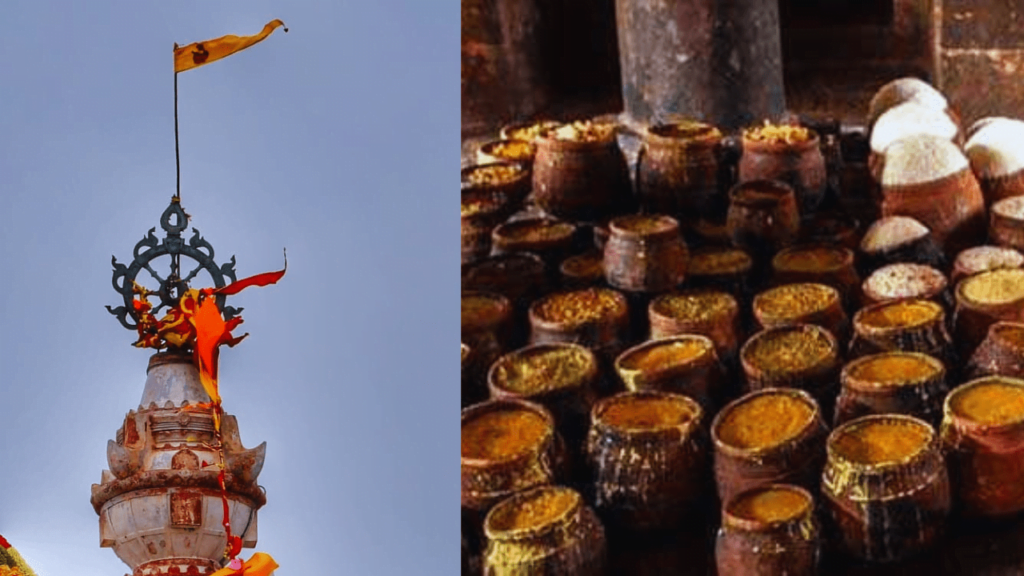Rath Yatra 2024, scheduled for July 7 this year is considered to be the grand Hindu festival held annually at the Jagannath Temple in Puri, Odisha, India.

Rath Yatra, also known as the Festival of Chariots, is a grand Hindu festival held annually at the Jagannath Temple in Puri, Odisha, India. This spectacular event celebrates the journey of Lord Jagannath, along with his siblings Balabhadra and Subhadra, from their temple abode to the Gundicha Temple. Scheduled for June 29 to July 7, 2024, the Rath Yatra draws millions of devotees and tourists from across the globe.
It is believed that there are many fascinating and amazing facts related to Lord Jagannath and the Puri Temple. Today, Eagles Journal will help you explore some of the most incredible and lesser-known facts about Rath Yatra and delve deeper into the significance of Lord Jagannath.
The Origins and Significance of Rath Yatra
Rath Yatra is rooted in ancient traditions and holds profound religious significance. It commemorates Lord Jagannath’s annual visit to Gundicha Mata Temple, honoring Queen Gundicha, the wife of King Indradyumna who built the Puri Jagannath Temple. The Hindu Lunar calendar determines the festival’s date and falls on Dwitiya Tithi during Shukla Paksha of the Ashada month, usually in June or July.
The Deities: Lord Jagannath, Balabhadra, and Subhadra
Lord Jagannath, considered a form of Lord Vishnu, is revered by Vaishnavism followers. The term “Jagannath” means “Lord of the Universe.” The deities are worshipped along with his brother Balabhadra and sister Subhadra. The Jagannath Temple in Puri is one of the four Hindu pilgrimage centers known as Char Dham, which every Hindu is expected to visit in their lifetime.

Preparation for Rath Yatra
The preparations for Rath Yatra begin well in advance. Approximately 18 days before the festival, a ceremonial bath known as Snana Yatra is performed, where the deities are bathed and then kept in isolation to recover, symbolizing a period of illness. This ritual takes place on Purnima Tithi in the Jyeshtha month, known as Jyestha Purnima.
The Rituals of Rath Yatra
Gundicha Marjana
A day before Rath Yatra, devotees clean the Gundicha Temple in a ritual known as Gundicha Marjana. This is done to purify the temple before the deities arrive.
Chhera Pahara
One of the most unique rituals is Chhera Pahara, where the King of Puri sweeps the chariots with a golden-handled broom and decorates them with flowers. This act symbolizes that everyone is equal in the eyes of the Lord.
The Chariots
The three chariots used in the festival are newly constructed each year using specified wood from trees like phassi and dhausa. These chariots, named Nandighosha (for Jagannath), Taladhwaja (for Balabhadra), and Devadalana (for Subhadra), are decorated following age-old traditions. Each chariot has a unique design, and the deities are placed in them amid much fanfare and devotion.
The Journey
The journey from the Jagannath Temple to the Gundicha Temple spans several kilometers and is filled with chanting, dancing, and singing by devotees. The deities’ chariots are pulled by hundreds of devotees, creating a mesmerizing spectacle of faith and enthusiasm.
Hera Panchami and Bahuda Yatra
Four days after Rath Yatra, Hera Panchami is celebrated when Goddess Lakshmi visits the Gundicha Temple in search of Lord Jagannath. After spending eight days at Gundicha Temple, the deities return to their main abode in a procession known as Bahuda Yatra or Return Yatra. During this return journey, the deities make a short stop at the Mausi Maa Temple dedicated to Goddess Ardhashini.

Fascinating Facts About Rath Yatra and Jagannath Temple
The Chariots’ Reluctance to Move
One of the most intriguing aspects of Rath Yatra is the reluctance of Lord Jagannath’s chariot to move initially. Despite the massive push and pull efforts by thousands of devotees, the chariot often remains stationary for hours. This phenomenon is believed to symbolize the divine will, indicating that the journey will commence only when the Lord desires. Devotees interpret this as a sign of the deity’s power and presence, adding to the mystical aura surrounding the festival.
Annual Reconstruction of Chariots
The chariots used in Rath Yatra are built anew each year, a tradition that has been followed for centuries. The wood for the chariots is sourced from specific types of trees, primarily phassi and dhausa, which are considered sacred. The construction of the chariots begins months before the festival, with skilled craftsmen working meticulously to create these massive structures. Despite being rebuilt annually, the design, model, and dimensions of the chariots remain unchanged. This practice underscores the importance of tradition and continuity in the festival.
The King’s Humble Role
A remarkable ritual during Rath Yatra is the Chhera Pahara, where the King of Puri sweeps the chariots and the ground with a golden broom. This act of humility signifies that everyone, regardless of their social status, is a servant of the Lord. The king’s participation in this ritual reinforces the idea that divine service transcends all human hierarchies. It is a powerful reminder of the egalitarian principles that underpin the festival.
Open to All
While the Jagannath Temple is traditionally restricted to Hindus, Rath Yatra is an exception. During the festival, people of all religions and castes are welcome to witness the deities and participate in the festivities. This inclusiveness reflects the universal appeal of Lord Jagannath and the festival’s underlying message of unity and harmony. The sight of people from diverse backgrounds coming together to celebrate the event is a testament to its widespread cultural and spiritual significance.
The Origin of the Term “Juggernaut”
The English term “juggernaut,” meaning an overwhelming, unstoppable force, is derived from the massive chariots used during Rath Yatra. The sheer size and momentum of these chariots, pulled by thousands of devotees, create an impression of an unstoppable force. This term aptly captures the grandeur and dynamism of the festival, highlighting its impact on the collective imagination.

The Mysterious Sudarshan Chakra
The Sudarshan Chakra atop the Jagannath Temple is an architectural marvel. It appears the same from every angle and direction, a feature that continues to baffle scientists and architects. This unique characteristic is a testament to the advanced engineering and craftsmanship of ancient times. The chakra’s enigmatic design adds to the temple’s mystical allure, drawing countless visitors who are eager to witness this marvel.
The Reversed Wind Flag
Another astonishing fact about the Jagannath Temple is that the flag atop the temple flutters in the opposite direction of the wind. This phenomenon has intrigued scientists and devotees alike, as it defies the laws of physics. The flag, known as the Patitapaban Bana, is changed every day, a ritual that involves climbing the temple’s 214 feet high dome without any safety equipment. The reversal of the wind direction is considered a divine phenomenon, further enhancing the temple’s mystique.
The Silent Waves
Inside the Jagannath Temple, the sound of the ocean waves, which is otherwise loud and clear outside, becomes mysteriously muted. This phenomenon has been a subject of fascination for both devotees and scientists. Some believe it to be a divine blessing, ensuring peace and tranquility within the temple premises. This auditory anomaly adds to the spiritual ambiance of the temple, providing a serene environment for worship.
The Efficient Prasad System
The Jagannath Temple’s kitchen, known as the Rosaghara, is considered the largest kitchen in the world. It prepares Mahaprasad, the sacred food offered to the deities and then distributed among the devotees. One of the most fascinating aspects of this kitchen is that the food is cooked in earthen pots stacked one over the other. Miraculously, the topmost pot cooks first, defying conventional cooking logic. Despite the massive quantity of food prepared daily, none of it goes to waste. This efficient system of preparing and distributing prasad is a marvel of culinary management.
The Temple’s Shadow
The Jagannath Temple is an architectural wonder for many reasons, one of which is that it does not cast a shadow at any time of the day. This feat of engineering has intrigued architects and scientists for centuries. The absence of a shadow is considered a divine mystery, symbolizing the omnipresence of Lord Jagannath. This unique feature contributes to the temple’s reputation as a place of divine miracles.
Conclusion
Rath Yatra is not just a festival; it is a celebration of devotion, tradition, and the rich cultural heritage of Odisha, India. The festival’s rituals and customs, coupled with the deep reverence for Lord Jagannath, make it a unique and spiritually uplifting experience. The fascinating facts and mysteries associated with Rath Yatra and the Jagannath Temple add to its allure, drawing millions of devotees and tourists every year.
As millions gather to witness the grandeur of Rath Yatra 2024, they partake in a journey that transcends religious boundaries, bringing together people from all walks of life in a shared celebration of faith and unity. Jai Jagannath!
Read Next:

The Psychology of Love: Why Valentines Day Matters More Epic Than You Think
Discover the psychology of love and why Valentines Day is more important than you think. Learn how love impacts the brain, strengthens relationships, and boosts

Premier League Highlights: Arsenal Humiliate Man City 5-1, Spurs and Palace Secure Crucial Wins
Arsenal demolished Manchester City 5-1 in a statement premier league highlights win, reigniting their title hopes. Meanwhile, Crystal Palace stunned Man United 2-0, and Tottenham

How Budget 2025 Impacts the Indian Middle-Class: Major Tax Benefits and Glaring Omissions
Budget 2025 offers major tax relief to the middle class, including zero tax on incomes up to ₹12 lakh. However, it misses out on incentives
